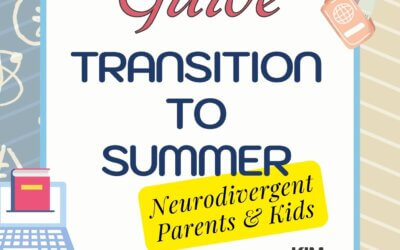Lately, I’ve been thinking a lot about how my ADHD brain works. I mean, I get shit done. But rarely in the right order. Not systematically, step by step. I can’t wake up in the morning and say, “Okay world, today I am going to do this” — and then do this.
The minute I declare, “I’m doing this,” I’m already hot on the trail of doing that.
I refuse to be coerced by lists or corralled into logical project plans. Productivity tools promise so much. Is it my fault I abandon every single one?
But I am productive.
How?
I Surf

I scan the water of my daily life, assess the tides — my interest, motivation, and energy levels — and keep watch for waves that will move me toward my goals. Once I catch a wave, like the “blog-writing wave,” I ride it as far as it takes me.
On a good surfing day, I use the momentum from that fun wave to plow through a handful of not-so-fun emails.
On a bad day, I’m paddling hard with no momentum. If I’m lucky, the paddling results in small wins — a cleaner desk, a few gigabytes freed on my hard drive — just enough to keep me from drifting into the dreaded doldrums, that windless place that’s nearly impossible to escape.
If I’m unlucky, I get pounded by the surf: deadlines and expectations crashing on top of me, pulling me under, while I daydream or doom-scroll — unable to get myself and my board far enough out to catch even the smallest wave.
What Changed?
By now, I know myself well enough to recognize a good wave when I see it, to switch waves before I lose momentum, and to head to the recovery lagoon when I need it.
I don’t fight my brain anymore with thoughts like:
“Why can’t you just make a list and follow it like everyone else?”
or
“Imagine how much you’d get done if you were this productive every day.”
Those thoughts come from normative expectations about how we “should” work — and how ADHD brains often don’t work: in linear, systematic ways.
The Train Problem
The world expects us to act like trains: fixed tracks, predetermined routes, immovable schedules.
Tasks must be completed according to rigid timelines. Creativity, inspiration, bursts of focus — these things can throw the whole schedule off. For ADHDers, the fear of missing a stop or running late becomes chronic anxiety and guilt.

But ADHD isn’t about deficit.
It’s about variability.
ADHD Is a Misnomer
ADHD should really be called AVHD — Attention Variability Hyperactivity Disorder — with V for variability instead of D for deficit.
When attention varies, linear productivity approaches crumble. What we need instead are practices that work with a brain that fluctuates in intensity, focus, and energy — the way wind and tides naturally rise and fall.
Surfing the Tidal Mind
“AVHD” brains are wildly creative, intuitive, and energizing to be around.. We can achieve incredible things when we:
- understand our tidal minds,
- ride the waves when they rise,
- paddle gently when there’s no wind, and
- rest and recover after being pounded by the surf.
If this is your neurotype — and even if it isn’t — you might want to grab your board, hop off the train, and and see what happens when you surf.
Ready to explore your tidal brain?




